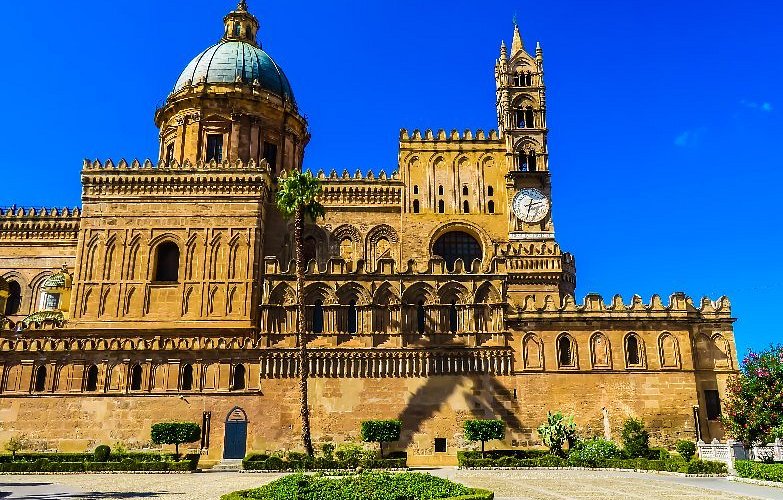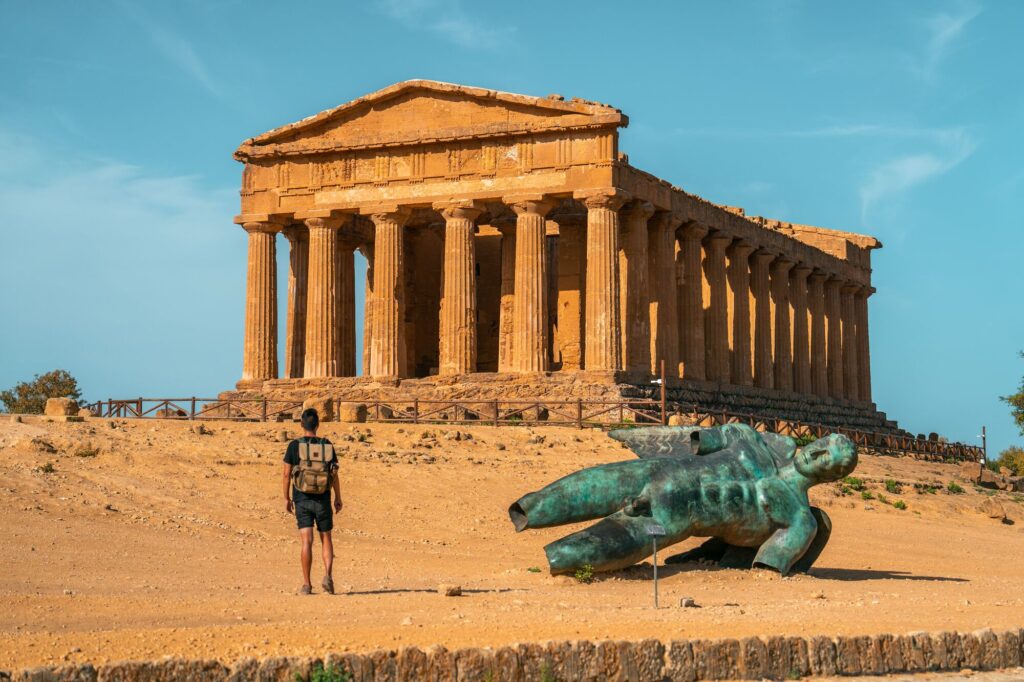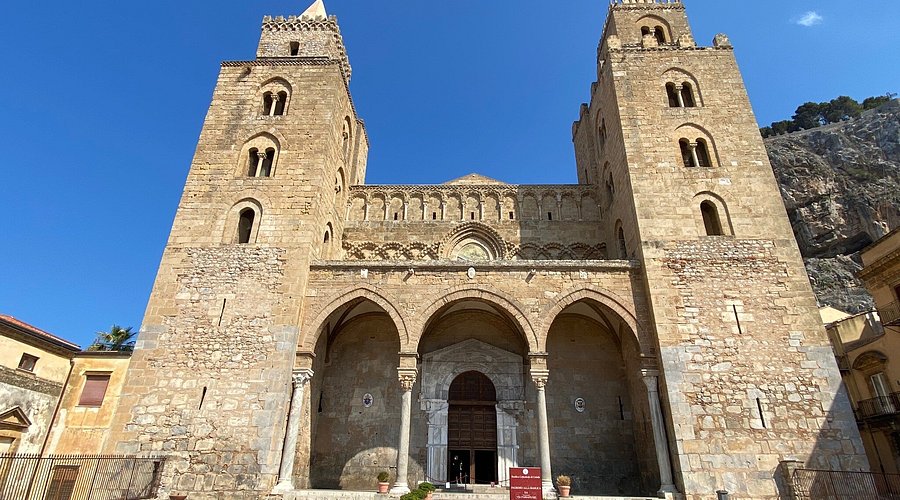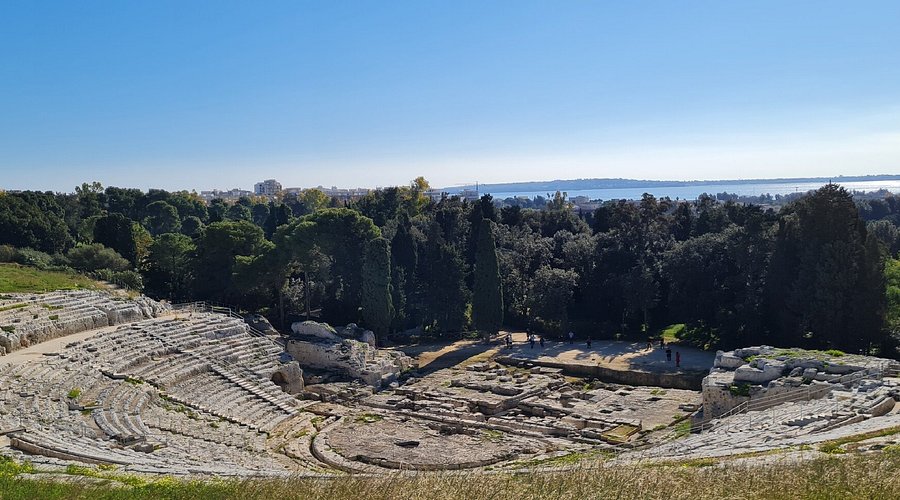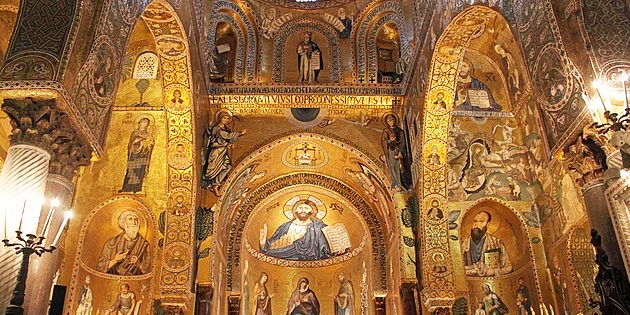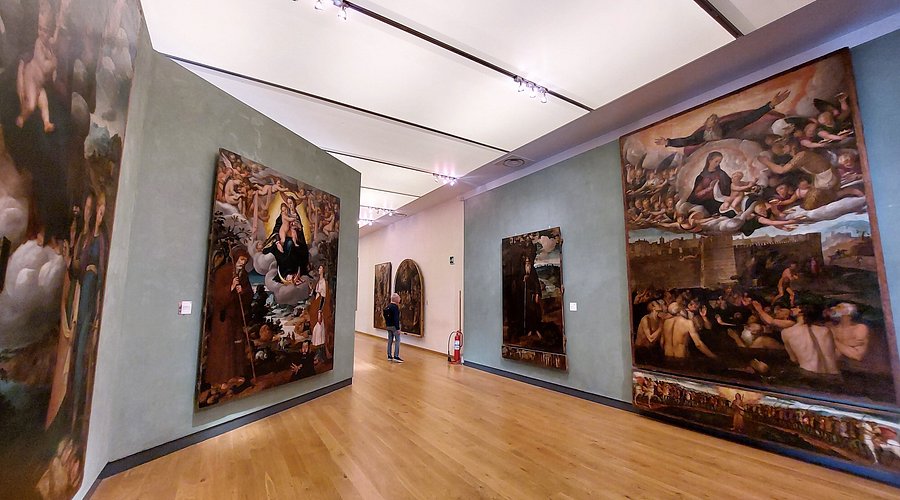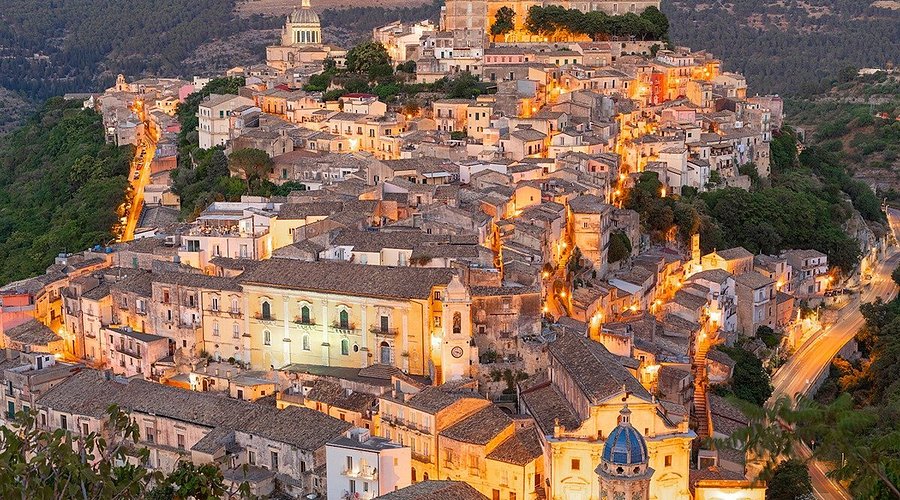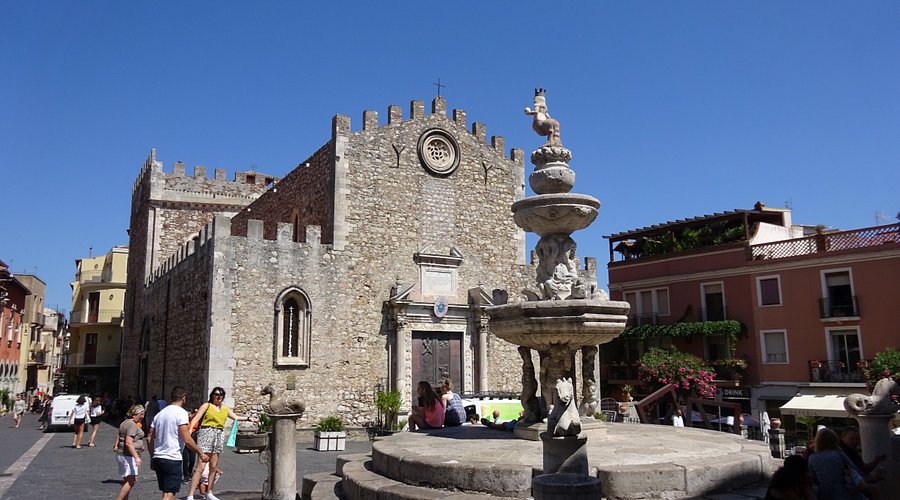Ragusa Ibla is a delight to explore, its maze of narrow lanes winding through weathered stone palazzi and opening unexpectedly onto sunlit piazzas. Getting lost here is part of the charm—but no matter which turn you take, all roads seem to lead back to the heart of the town: Piazza Duomo, a stunning square anchored by the majestic cathedral.
Facing the piazza on Corso XXV Aprile is the elegant Palazzo Arezzo di Trifiletti, an aristocratic residence built between the 17th and early 19th centuries. Guided tours reveal its show-stopping ballroom, adorned with rare late-18th-century Neapolitan majolica tiles and radiant 19th-century frescoes that have remarkably never required restoration.
Directly opposite, Via Novelli leads to the intimate Teatro Donnafugata, a 99-seat gem that mirrors the grandeur of an Italian opera house in miniature. It’s a highlight of the A Porte Aperte walking tour through Ragusa Ibla.
Continuing down Via Novelli brings you to Via Orfanotrofio, home to Cinabro Carrettieri, the vibrant workshop of master Sicilian cart makers Biagio Castilletti and Damiano Rotella, internationally acclaimed for their intricate craftsmanship. The street curves back to Corso XXV Aprile, where you’ll encounter the elegant Chiesa di San Giuseppe, designed by Gagliardi and topped with a graceful dome featuring Sebastiano Lo Monaco’s fresco Gloria di San Benedetto (1793).
A short walk downhill, just beside the entrance to the Giardino Ibleo, lies the Gothic-Catalan portal of the ruined Chiesa di San Giorgio Vecchio. The carved lunette above the door captures a vivid bas-relief of St George slaying the dragon.
At the far end of the quarter, the Chiesa delle Santissime Anime del Purgatorio stands as one of the few churches to have withstood the devastating 1693 earthquake. Inside, don’t miss Francesco Manno’s evocative Anime in Purgatorio (Souls in Purgatory, 1800), a powerful centerpiece at the main altar.

